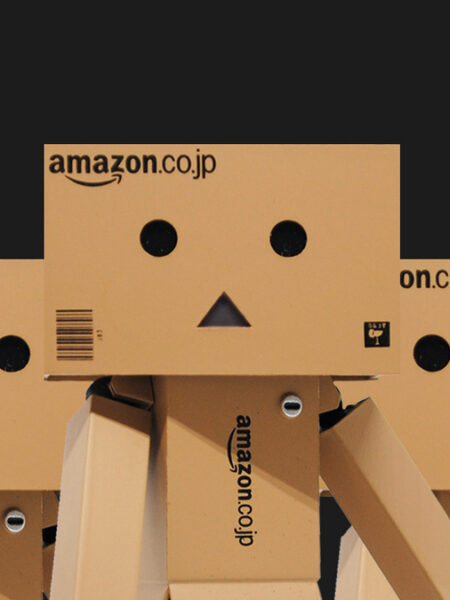The shift from offline retail to online eCommerce is an unstoppable trend. eCommerce “happened” over two decades ago. And its relevance never decreased, on the contrary. More and more people are looking for ways to start their eCommerce businesses. One of the first questions they should ask is How to choose the right eCommerce business model? Before answering this essential question, there’s a checklist to go over first.
- Who are your buyers?
- What are you selling?
- What product model will you use?
- What’s your competitive advantage?
These are some of the fields you should carefully consider before choosing the right eCommerce business model.
Types of eCommerce Business models
If you wish to start your eCommerce business, you should explore the types of eCommerce business models. There are 6 fundamental types of eCommerce:
- Business to business (B2B)
- Business to consumer (B2C)
- Consumer to consumer (C2C)
- Consumer to business (C2B)
- Business-to-Administration (B2A)
- Consumer-to-Administration (C2A)
Each of these business models has its advantages and specific aims. Be sure to learn about every option and make the right move.
How to Choose the Right eCommerce Business Model?
So the first thing you must ask yourself is – Who are your customers? Determining your buyers will help you untangle your business necessities. Learn who you’re selling to and you’ll find the suitable eCommerce business model.
Who are your buyers?
With so many eCommerce stores out there, you’ll spot some subtle and some substantial differences between them. What do they sell? How do they do it? These are some of the questions we’ll be answering. Before that, let’s focus on “who.”
Although there are other types of business models, these are usually the top choices when it comes to choosing the right eCommerce category:
- B2B involves providing products (or services) from one business to another.
- B2C implies a sales process when a company provides to consumers.
- C2C means that customers sell products directly to other customers.
- C2B represents a business model in which a customer sells a product or service to a business.
B2B – Business to Business
You are selling to other businesses (companies).
With B2B, you are most likely to:
- Receive bulk orders
- Have a high purchase intent
- Grow steadily.
However, there are some downsides of B2B, and they include:
- Difficulty managing customer requests
- Longer sales cycle
- Very competitive market (and the continuous necessity to keep track of the market trends and prices).
B2C – Business to Consumer
You are selling to your end consumers (individuals). B2C is the most common eCommerce type. As in every other eCommerce model, there are some significant pros and cons of B2C.
Selling goods or services to your end-users is beneficial because you get:
- Reduced costs, which is especially important when starting up a business
- Your online store is open 24/7
- Quick and easy interactions with customers, which simplifies your customer service needs.
However, some drawbacks you must keep in mind include:
- High customers’ expectations, particularly when it comes to the delivery time and your responsiveness
- High competitiveness
C2C – Consumer to Consumer
As s customer, you are selling products to other consumers. You would most likely use a platform like eBay and rely on other businesses to facilitate your transactions.
If you chose C2C, you’d encounter these advantages:
- Low costs and investments
- Direct contact with customers
- Reaching a wide audience
The principal disadvantage of C2C is the lack of control. Many aspects depend on third-parties, including the design and layout of your products’ page.
C2B – Consumer to Business
If you picked C2B, it would imply that you’re a customer who’s selling to businesses.
What are you selling?
The type of eCommerce business you’ll choose depends on the type of goods you’re selling. You can offer your customers:
- Digital products
- Physical goods
- Services
Digital products
Digital products can fall under several categories. Most eCommerce businesses sell online courses, eBooks, music, or multimedia content. You would choose the right eCommerce business model to sell your digital products based on a few crucial facts:
- This type of sales doesn’t require physical shipping
- Digital products are quickly attainable
- You can sell countless copies of your product
- There’s no (physical) storage involved
Physical goods
Selling physical products online represents the most traditional form of eCommerce. You can offer these types of products to both customers and businesses. However, there are a few possibly disadvantageous aspects you must consider:
- Storage: You’d need a space to store your goods;
- Shipping: Delivering goods to buyers that sometimes comes with struggles, delays, or misunderstandings;
- Breakage: The matter of damaging physical goods in transport is one of the main concerns of eCommerce business owners.
Services
eCommerce businesses offer multiple services. Some of the most frequently offered services include web development and design, content creation and distribution, marketing services, office management, and more. This means that the services your eCommerce business sells might happen online or offline.
Choose a niche and a target audience if you’d like to focus on selling services.
What product model will you use?
So, you have asked yourself, “To Whom?” and “What?”. Now, let’s see about “How?” and choose the right eCommerce business model for you.
This question is primarily related to selling physical goods through your eCommerce. Your options include:
- Making your product
- Manufacturing it
- Buying wholesale
- Working with dropshipping partners
What does each option entail?
When choosing the right eCommerce business model, you must think about the stock and how you’ll fill your inventory. That’s what picking a product model entails. In other words – How will you make or obtain what you offer?
Making products
Hobbyists commonly choose to make products. It can represent a range of goods, mostly jewelry, cosmetics, makeup, and clothing. The downside of this kind of eCommerce choice is that your resources are limited. Not every product can be hand-made. Your main allies are your skills and the material you can afford to invest in.
Manufacture
Manufacturing usually works by employing a business to create the product on your behalf. You can source your provider locally or overseas.
Wholesale
Buying wholesale is possibly the lowest risk eCommerce business model. You would obtain goods from other brands.
Dropshipping
The concept of dropshipping is based on selling products you don’t own. You would take orders from your online business and forward them to your dropship partner. How does it bring you profits? It is crucial to focus on the price differences between what you charge and what your partners or suppliers charge.
What’s your competitive advantage?
There are a few notable competitive advantages you can rely on. The most significant ones are:
- Price (cost-effectiveness)
- Selection
- Excellent service
- Quality
Price
A discount strategy sounds appealing. However, it might not represent the best competitive advantage for your business. Small businesses, especially those at their very beginning, have trouble competing with large businesses. Big retailers are ahead of you in this case. They get to purchase large quantities of products, which allows them to sell them for a lower price and still gain a substantial profit.
Selection
If you have no issues with storage and inventory maintenance, offering a vast selection of products might help you compete. If selection is your advantage over other retailers, dropshipping is the right eCommerce model for you.
Excellent Service
Great customer service is also not easily attainable for most small businesses. Customer experience is inevitable for every future marketing strategy. If you’re a small eCommerce business owner – you’ll need to try harder to obtain the best results in this segment. Once your business starts growing, it would be best if you considered customer service outsourcing. This way, you’ll scale your business more successfully, and you’ll get to reduce numerous costs.
Pro tip: There are a few more roles you should consider outsourcing in eCommerce.
Quality
Offering high-quality products or services is often the best way to compete. Superior products make a memorable trademark and draw new customers. Today, the entire market is shifting toward increased quality. If you offer something that will last and bring desirable results to consumers, your eCommerce business will most likely thrive.
Choose The Right eCommerce Business Model
Before you choose the most suitable business model to breathe life into your ideas, make sure that you answer all of the questions from this blog. Choosing the right eCommerce business model shouldn’t happen overnight. Give it some time to think things through and gather the facts before you act. Some combinations require more resources or more effort. This is why you must rely on your knowledge on the topic prior to jumping into the world of online retailers.









